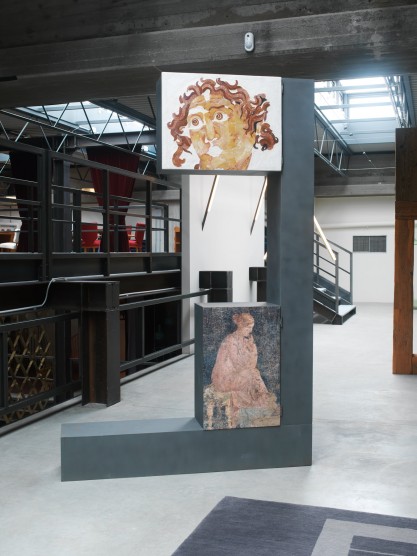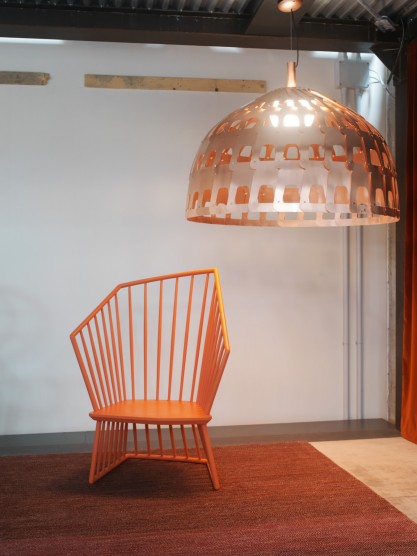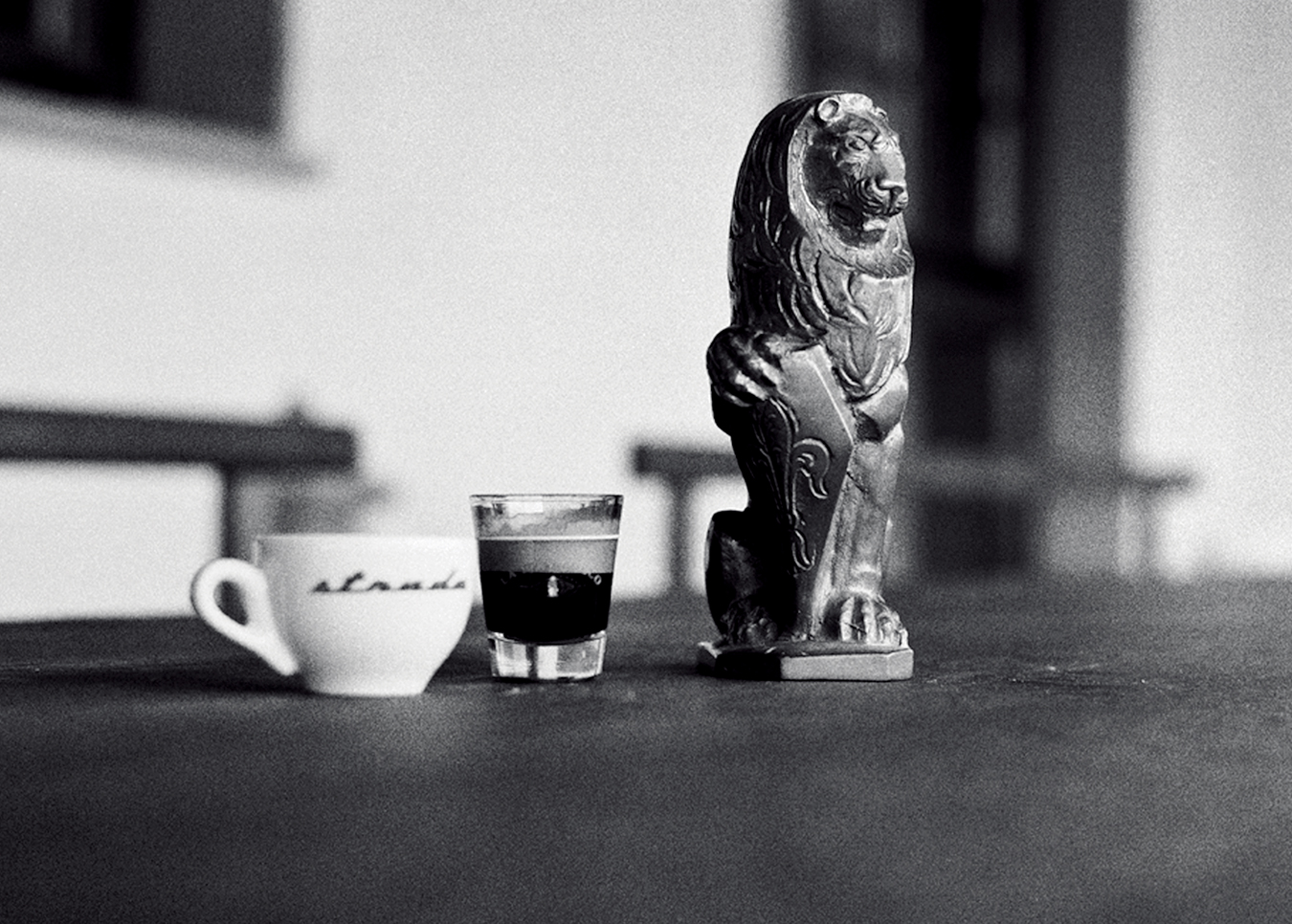Design Doyenne
Milan-based gallerist Nina Yashar.
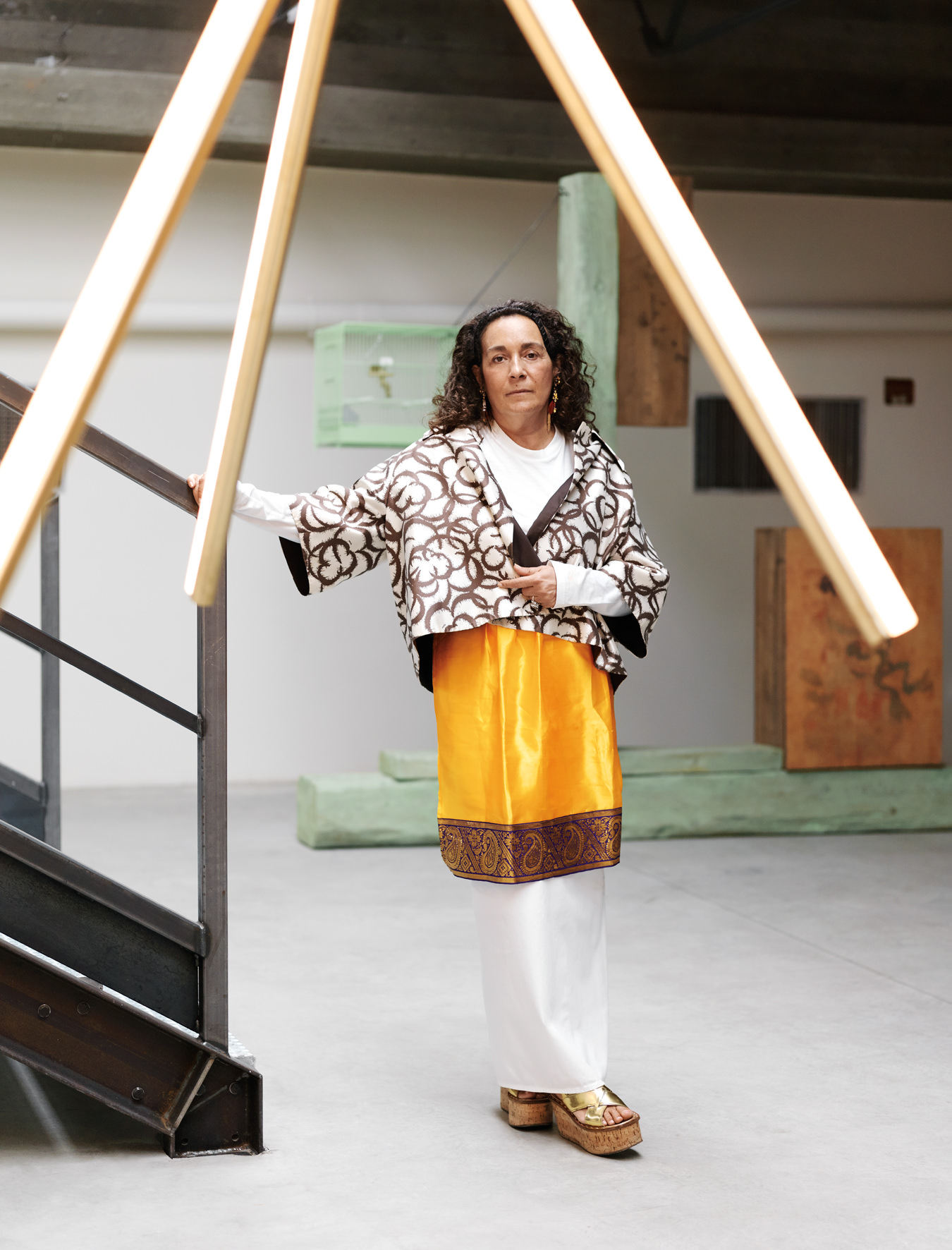
The Nina Yashar universe is as big in scale as her new design proscenium. The Milanese gallerist collects and exhibits 20th-century and contemporary furniture and objects, as well as carpets of any vintage, and opened her storage warehouse this April as a showcase of her collection in one vast terminal called Nilufar Depot. The warehouse was modelled by architect Massimiliano Locatelli, the interior configuration inspired by Milan’s La Scala theatre. Inside, velvet curtains hang between the exposed steel beams of the industrial building, framing three exposed mezzanine floors that make up two sides of the depot. It recalls a larger-than-life dollhouse; each intimate opening between the beams is a different domestic vignette built from combinations of unusual objects. In fact, the designers whose work populates the many stages of the depot could be considered the “character actors” of the design world, rather than the leading men—which isn’t a bad way to describe the gallerist, herself.
Tehran-born Yashar is the founder of Milan design gallery Nilufar, which opened in 1979 as a rug dealer, but which only began to deal in design, in a broader sense, 20 years later. Since then, however, Yashar has become known as one of Italy’s most inventive and active advocates of an extraordinary range of historical and progressive contemporary design. Yashar’s tastes are as off-the-beaten-path as her depot, which takes some metro-ing and a small hike to get to, but she has become a global tastemaker, and a kingmaker to boot. She has always had an eye for work that, though momentarily undersung, will go on to become coveted and collected at great expense: Gio Ponti, Gaetano Pesce, Piero Fornasetti. But as much as she celebrates the old guard, she scouts the young too, helping to make international names out of designers like Lindsey Adelman and Michael Anastassiades, as well as Maarten De Ceulaer and Martino Gamper, both of whom were students when Yashar found them.
The depot is the apotheosis of eclectic tastes native to Yashar but to which design trends are only recently catching up. In the interiors world, designers have been shedding uniformity; instead of cocooning clients in a tepid contemporaneity, they are creating specific spaces that broadcast identity, immerse visitors in a point of view, and engage them with space that is a conversation (among objects). For the gallerist, this view of things is felt, rather than rational. Yashar didn’t so much anticipate this shift in contemporary interiors; it is simply who she is.
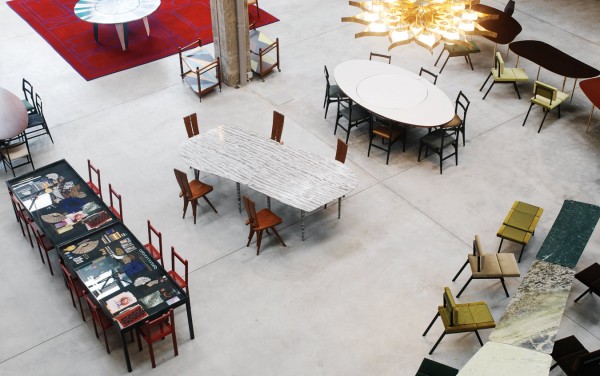
The Nilufar Depot, Nina Yashar’s newest design emporium in Milan.
Yashar, 58, describes herself as una selvaggia, a wild woman. Under heavy brows and untameable curls, she wears little makeup, but amplifies her presence by wearing tall platform shoes (often Prada) and dramatic, caftan-like full-length dresses with turbans or head scarves. Even her laugh is big. “Nina knows herself, and is herself all the time, so life does not eat her up,” says American designer Adelman, who has worked with Yashar since 2012.
Nilufar Depot is the apotheosis of eclectic tastes native to Yashar but to which design trends are only recently catching up.
Yashar seems almost girlish at moments, regal at others, but always favours straight talk and is known as a shrewd businesswoman. The gallerist’s Eastern roots are fundamental to her (nilufar means lotus in Farsi), but outwardly she is extravagantly Italian and, above all, Milanese, if one considers Milan a city inundated with innovation but where change can still feel slow to come, a city of fashion weeks and design fairs that still secrets its gilded palazzos and lush interior courtyards, and persists in its gentlemen’s tailors and artisanal glovers. Yashar is both icon and iconoclast. She maintains in a constant flux, and while she may seem compulsive, her vision appears certain, and with it, she takes great leaps of faith.
Born in 1957, and the eldest of two daughters (the younger, Nilu, runs the gallery with her), Yashar moved to Milan in 1963 when her father, Houchang, launched a successful antique and contemporary rug business there. Working with her father for a year, she was exposed to a stream of historical and contemporary craftsmanship, and sink-or-swim business experience. At 24, she earned a degree in art history and Oriental languages from the University of Venice and, with initial support from her father, opened Nilufar, on Via Bigli in central Milan.
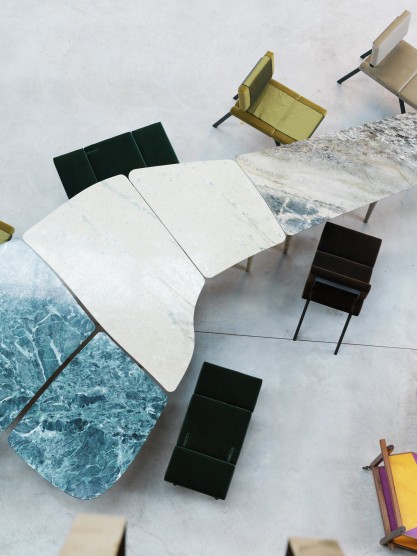

In 1989, she moved the gallery into a disconnected series of apartments in a residential complex on the swank Via della Spiga. She began to host exhibitions and, by 1995, was reintroducing European carpets to Europe, and then Chinese and Tibetan rugs, and Turkish forms of weaving, like kilims and gabbehs, from the mountains of Iran. In the late 1990s, on a trip to Stockholm to buy Märta Måås-Fjetterström rugs, she was taken to a warehouse filled with 1930s to 1960s masterworks by the likes of Alvar Aalto, Hans Wegner, and Arne Jacobsen—which she promptly bought without having a clue as to what she was buying. “I was emotionally involved,” Yashar recalls. So she brought them home and looked them up in books.
This was the provenance of the 1998 exhibition Tappeti svedesi e mobili scandinavi (Swedish rugs and Scandinavian furniture). From here on, she would never exhibit her new love without the old: “The object I am most fond of is the carpet. My life as a gallerist began with carpets and my real roots are connected to them, so for me, it is impossible to show furniture without them,” she says. “The carpet represents a virtual room without walls. It is the element that connects all furniture.”
With perhaps as much obsession as bravery, she began to pursue a mish mash of modern and contemporary furniture by Europeans and Americans—Charlotte Perriand, Jacques Adnet, the French rationalists and Roger Tallon, Gino Sarfatti lamps, Paul Evans metal furnishings—and by the Italians, anticipating a wave of collection that would make them valuable. She began dovetailing art and design, unknown newcomers with the iconic old guard. And, ever-present: the carpet, even if it was now the silicone carpets of Pesce, master of the mass-produced one-off and the ugly-beautiful.
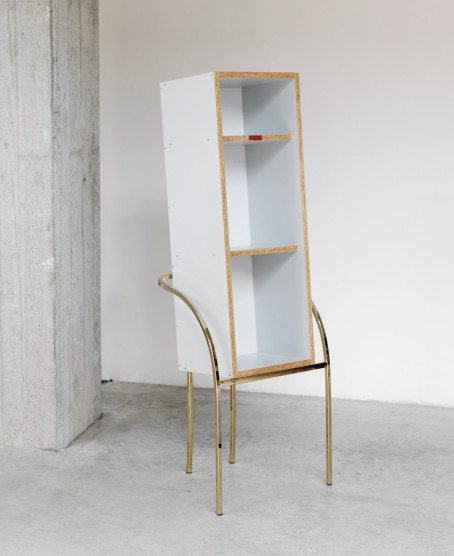
Chair Shelf by Martino Gamper.
Dichotomies—national borders, design, art—are not interesting to Yashar until one is talking about mixing them up. “I like to discover new ways to make conversations: to put together a Scandinavian lamp with a Tibetan cabinet or a Chinese carpet,” says Yashar, who assigned Nilufar the manifesto “Discovering, Crossing, Creating”. “I don’t like the monothematic situation; I like situations that are unexpected.”
One unexpected place in which Yashar mapped her eclecticism is in two catalogues for the 1999 and 2000 exhibitions Crossings, which brought together items like mid-century Persian carpets and 19th-century Mongolian rugs with Finnish lighting. Printed in only 3,000 copies and now highly sought after, they cemented her growing reputation: around Yashar, not just design, but even catalogues of design become rare collectible objects in their own right.
“Yes, her collection is exceptional,” Adelman says. “But it’s what she does with it that sets her apart. It comes back to who she is as a person. Nina is characterized by fearless charging towards a vision in her mind. It is about creating what does not exist, and it means everything [to her].” In 2013, that vision resulted in her co-curation of a temporary “residential gallery” of design, a fictional living space and site-specific synthesis of design, art, and architecture called Squat. Hosted in a 1,500-square-metre hôtel particulier—a type of classic French manor—at Spot 2013 in Paris, the scenographic “home” combined the cardboard Paper Tea House by Shigeru Ban with Japanese Edo-period partitions, a brass lighting installation by Isabelle Stanislas, and Ponti originals ranged around a carpet by Martino Gamper. (The carpet depicted the floor plan of a 320-square-foot apartment, making literal Yashar’s understanding of carpets as wall-less, virtual rooms.)
“I like to discover new ways to make conversations: to put together a Scandinavian lamp with a Tibetan cabinet or a Chinese carpet,” says Yashar, who assigned Nilufar the manifesto “Discovering, Crossing, Creating”. “I don’t like the monothematic situation; I like situations that are unexpected.”
Squat, which is a recurring exhibition, draws together a diversity of unusual pieces intended to stretch visitors’ notions of what an interior might be if they are only willing to step outside conventional templates of domestic design. “This is very powerful to show to people the final destination of furniture, carpets, lighting, and art,” says Yashar. “It could be their own home, and it allows them to dream.”
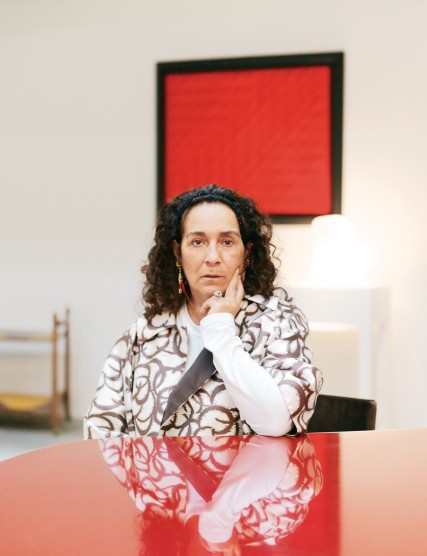
Although she collects and sells objects singly, Yashar understands them in relationship to each other, to palette, light, materials, textures, forms. For her, design pieces are the building blocks of any world we want to imagine, and, faced with such freedom, it is anathema to repeat, conform, copy, segregate, or even stand still. Yashar’s actual residence is another site of her restless curation: comprising 250 square metres (2,700 square feet) across two floors and four terraces of a 1940s building in east central Milan, her home is the design product not of an architect, but of a jeweller. She shares it with her husband, Angelo, a consultant for Prada, and their 24-year-old daughter, Lavinia, a medical student, and has composed and recomposed it for nigh on 25 years as a menagerie of the mid-century and the Victorian, wall-sized anime canvases and frescoed ceilings inlaid with 16th-century Mughal Indian motifs.
To draw diverse objects together, Yashar sometimes glosses over the hierarchy of market value and status (in order to create new ones). When she found tables by Merano-born Gamper in 2004, he was still studying at London’s Royal College of Art, but within a few short years, he was standing in front of an audience at Art Basel Miami Beach and Design Miami to disassemble a number of Ponti chairs and put them back together again as Ponti-Gamper hybrids. This iconoclastic performance served to secure Gamper’s place in the design-art cosmology and introduce his rough-polished aesthetic to an international audience, but it also distilled Yashar’s belief in the power of the old and new to enrich each other.
She has advocated passionately for the work of other young designers, too, including Irishman Joseph Walsh, a virtuoso who combines art, craft, and design, and British artist Bethan Laura Wood, who uses wood laminate and plastics to explore the mundane and the urban. “I focus on the project and its narrative—which I must love—not on the name of the designer,” Yashar explains, “because if I believe in the project, I promote also the designer.” During the 2011 Milan Salone del Mobile furniture fair, in the rococo 17th-century Palazzo Durini, she exhibited the stripped-down linearity of Anastassiades’s Lit Lines collection, juxtaposing the state-of-the-art with a marble and gilt Old World. Anastassiades’s insistent symmetry serves as a foil to Yashar’s imprecise asymmetry, which is precisely why she folded it into her collection. “This is what I really love,” she says with animation—“this conversation.”
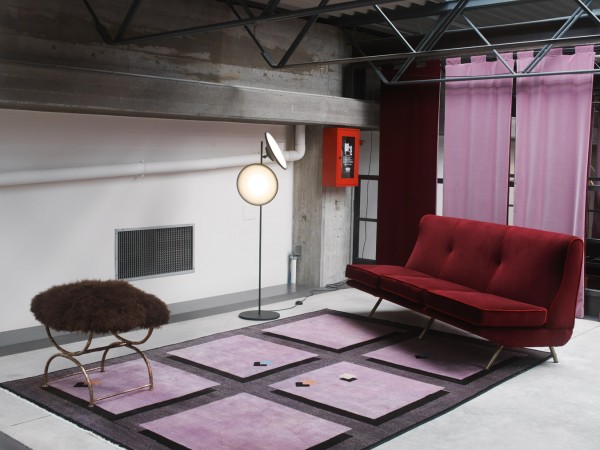
“Her design vision goes beyond making it successful financially,” says Anastassiades. “She believes in design and in educating people in design. And when she believes in a particular design, she will exhibit it and convince people that this is something that is worth looking at, and then, eventually, they come to understand that this is something commercially valuable.”
Her business has never suffered for her passions; there is a through-line of pragmatism. “I give importance to the conceptual project of Martino [Gamper] because we have customers who want a conceptual and intellectual approach in design,” Yashar explains. “At the same time, I give importance to projects that represent glamour and luxury because my customers, for sure, are rich people and I like to give them new proposals that can reflect their desires. Then I have other customers who like to come to my place because they can find many very different things at the same moment.”
The bulk of Yashar’s clientele work in creative industries, particularly in fashion, and she calls her favourites “persone illuminate”, enlightened people. In truth, her taste whispers in the ears of a privileged few, but the contagion she spreads is cannily directed. In persuading her illuminati, Yashar is persuading those who design culture. The rest is just word of mouth.
